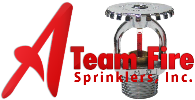

Services
Fire Hydrant Inspection
Fire Hydrant Inspection
NFPA standards require that all public fire hydrants be inspected on an annual basis. Our certified trained technicians can make sure your fire hydrant is up to code, so that it will be able to protect you and your business in the event of a fire.
Fire Hydrant Inspection
Fire hydrant inspection process is designed to ensure that your building’s fire hydrant meets all proper fire safety codes. While there are slight variations in procedures involving multi-valve, single valve, and single outlet hydrants, the general process is basically the same.
Attach a pressure gauge to one outlet and take a reading.
Turn on the valve to the gauge and record the reading.
Attach a pressure gauge to an adjacent hydrant or nearby hose bib.
Turn on the second hydrant or hose bib and record the reading. Note: We are taking the pressure reading not flowing the second hydrant.
Completely open the outlet to which the pitot is being used.
Take and record a pitot reading by inserting the pitot gauge into the center of the column of water. The inlet for the gauge should be placed a distance from the opening equal to the diameter of the opening.
Take and record the residual pressure on the hydrant cap gauge.
Take and record the residual pressure at the secondary location.
Close the hydrant slowly being careful not to cause a “water hammer” and spik the pressure on the cap gauge above the normal static pressure.
Verify that all valves closed properly, are not seeping or leaking, and that the hydrant is ready for service.
Inspect caps, paint, street markings, and other aspects of the hydrant, recording items which need attention so that follow-up service can be scheduled.
